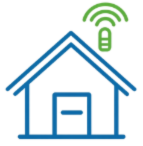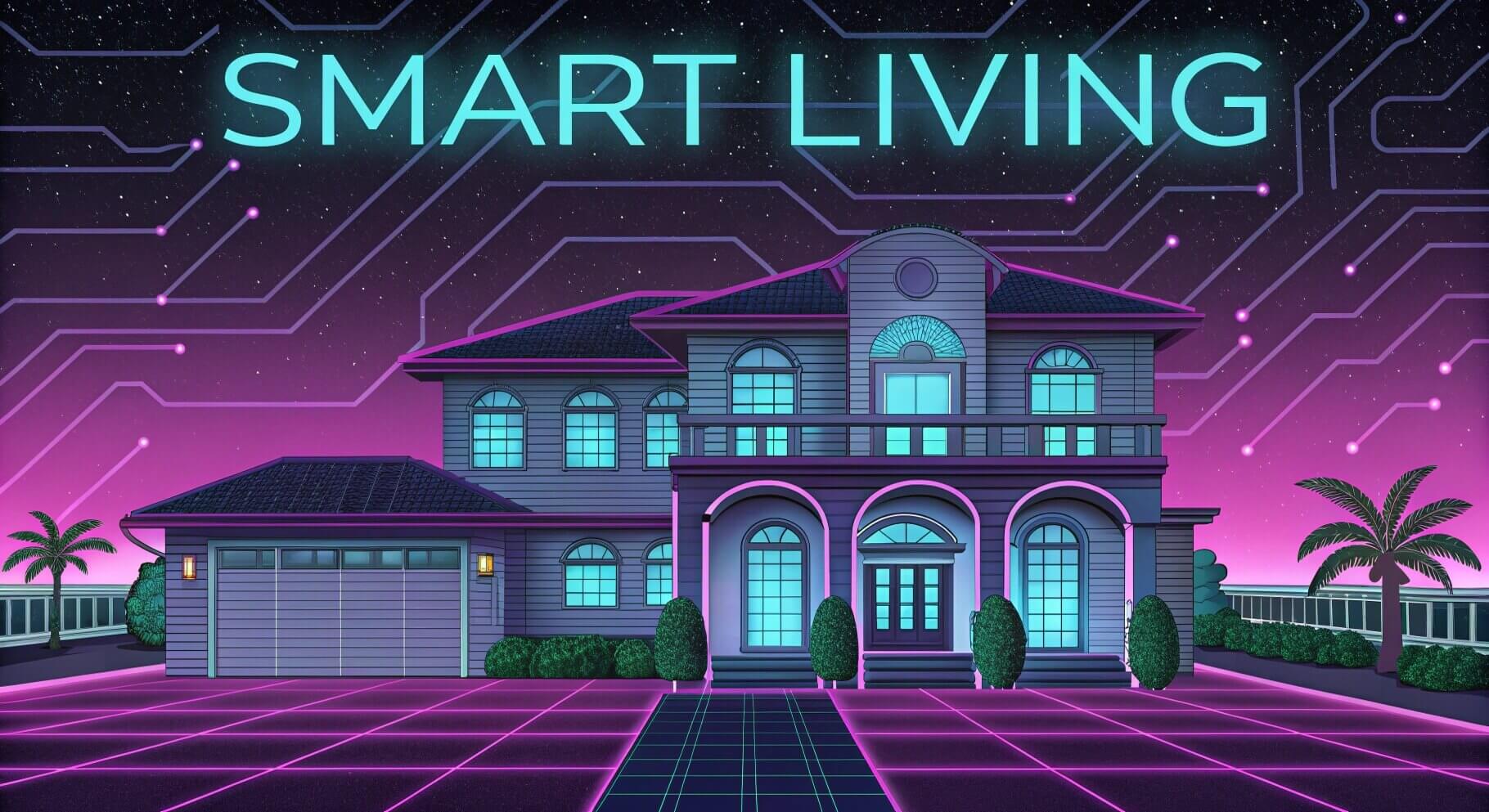The concept of smart living has evolved significantly over the past few decades, driven by rapid advancements in technology and an increasing demand for convenience, efficiency, and sustainability. Smart living encompasses a wide array of interconnected devices and systems designed to enhance the quality of life for individuals and families. This integration of technology into everyday life not only simplifies tasks but also promotes a more sustainable lifestyle by optimizing resource usage.
As urbanization continues to rise and populations grow, the need for innovative solutions to manage our living environments becomes increasingly critical. At its core, smart living is about creating an ecosystem where technology seamlessly interacts with human activities. This includes everything from smart home automation systems that control lighting and temperature to advanced health monitoring devices that track personal wellness.
The Internet of Things (IoT) plays a pivotal role in this transformation, allowing devices to communicate with one another and with users, thereby creating a cohesive living experience. As we delve deeper into the various facets of smart living, it becomes evident that this technological revolution is not merely about convenience; it is also about enhancing safety, improving energy efficiency, and fostering a healthier lifestyle.
Key Takeaways
- Smart living encompasses the use of technology to improve various aspects of daily life, including home automation, energy management, security, entertainment, and health and wellness.
- Smart home automation allows for the control and automation of various devices and systems within the home, such as lighting, heating, and cooling, through a centralized system or mobile app.
- Energy management systems help to monitor and optimize energy usage within the home, leading to cost savings and environmental benefits.
- Security and surveillance technology provides peace of mind through features such as smart locks, security cameras, and motion sensors, all of which can be monitored and controlled remotely.
- Entertainment and multimedia technology enhances the home experience through features such as smart TVs, audio systems, and streaming services, all of which can be integrated for a seamless entertainment experience.
Smart Home Automation
Smart home automation represents one of the most visible aspects of smart living, transforming traditional homes into intelligent environments that respond to the needs and preferences of their inhabitants. At the heart of this transformation are smart devices such as thermostats, lights, locks, and appliances that can be controlled remotely via smartphones or voice-activated assistants. For instance, a smart thermostat can learn a homeowner’s schedule and adjust the temperature accordingly, ensuring comfort while minimizing energy consumption.
This level of automation not only enhances convenience but also contributes to significant cost savings on utility bills. Moreover, the integration of smart home systems allows for greater customization and personalization. Homeowners can create specific settings for different times of the day or activities, such as a “movie night” mode that dims the lights and adjusts the sound system with a single command.
Additionally, many smart home devices are compatible with one another, enabling users to create complex routines that enhance their living experience. For example, a morning routine could involve the gradual brightening of lights, the brewing of coffee, and the opening of blinds—all triggered by a single voice command or scheduled event. This level of interconnectedness not only simplifies daily tasks but also fosters a sense of control over one’s environment.
Energy Management Systems
Energy management systems (EMS) are integral to the smart living paradigm, focusing on optimizing energy consumption within homes and buildings.
These systems utilize advanced technologies to monitor energy usage patterns, identify inefficiencies, and suggest improvements.
For instance, smart meters provide real-time data on electricity consumption, allowing homeowners to track their usage and make informed decisions about energy-saving practices.
By analyzing this data, EMS can recommend specific actions, such as shifting energy-intensive tasks to off-peak hours when electricity rates are lower. In addition to monitoring energy consumption, EMS can integrate with renewable energy sources such as solar panels or wind turbines. This integration allows homeowners to maximize their use of clean energy while minimizing reliance on traditional power grids.
For example, during sunny days, a solar energy system can power household appliances directly while storing excess energy in batteries for later use. This not only reduces energy costs but also contributes to a more sustainable lifestyle by decreasing carbon footprints. Furthermore, as energy prices fluctuate and environmental concerns grow, the importance of effective energy management systems will only continue to rise.
Security and Surveillance
Security and surveillance technologies have undergone a remarkable transformation in the era of smart living. Traditional security systems often relied on basic alarms and cameras that required manual monitoring. In contrast, modern smart security solutions leverage advanced technologies such as artificial intelligence (AI), machine learning, and real-time data analytics to provide comprehensive protection for homes and businesses.
Smart cameras equipped with facial recognition capabilities can distinguish between familiar faces and potential intruders, sending alerts to homeowners when unusual activity is detected. Moreover, smart locks offer enhanced security features that traditional locks cannot match. These locks can be controlled remotely via smartphones, allowing homeowners to grant access to visitors without being physically present.
For instance, if a delivery person arrives while homeowners are away, they can unlock the door temporarily through an app, ensuring packages are safely delivered inside. Additionally, many smart security systems integrate with home automation platforms, enabling users to create security routines that automatically lock doors or turn on lights at specific times or in response to certain events.
Entertainment and Multimedia
The realm of entertainment and multimedia has been significantly enriched by smart living technologies. Smart TVs, streaming devices, and audio systems now offer unparalleled access to content from various sources, allowing users to curate their entertainment experiences effortlessly. With voice-activated assistants like Amazon Alexa or Google Assistant integrated into these devices, users can control playback with simple voice commands—whether it’s playing their favorite show or adjusting the volume without needing to fumble for remote controls.
Furthermore, multi-room audio systems enable seamless music streaming throughout the home. Homeowners can enjoy synchronized music in every room or choose different playlists for different spaces based on mood or activity. For example, during a dinner party, ambient music can be played in the dining area while upbeat tunes fill the kitchen.
The ability to customize audio experiences enhances social gatherings and personal enjoyment alike. Additionally, virtual reality (VR) and augmented reality (AR) technologies are beginning to find their place in smart living environments, offering immersive gaming experiences and interactive media consumption that further blur the lines between reality and digital entertainment.
Smart Appliances
Enhancing Efficiency and Convenience
From refrigerators that monitor food inventory to washing machines that can be programmed remotely, these appliances are designed to enhance efficiency and convenience in our daily lives. For instance, a smart refrigerator can send notifications when groceries are running low or suggest recipes based on available ingredients—transforming meal planning into a more streamlined process.
Personalized Experience with Machine Learning
Moreover, many smart appliances come equipped with machine learning capabilities that allow them to adapt to user preferences over time. A smart oven might learn your cooking habits and suggest optimal cooking times and temperatures for your favorite dishes. This not only saves time but also ensures better cooking results by taking the guesswork out of meal preparation.
Eco-Friendly and Energy Efficient
Additionally, these appliances often feature energy-efficient settings that help reduce overall consumption while maintaining performance standards—an essential consideration in today’s environmentally conscious society.
Health and Wellness Technology
The integration of health and wellness technology into smart living is reshaping how individuals approach personal health management. Wearable devices such as fitness trackers and smartwatches monitor vital signs like heart rate, sleep patterns, and physical activity levels in real-time. This data empowers users to make informed decisions about their health by providing insights into their daily habits and encouraging healthier lifestyle choices.
For example, a fitness tracker might alert users when they have been sedentary for too long or remind them to stay hydrated throughout the day. In addition to wearables, smart home technologies are increasingly being utilized for health monitoring purposes. Devices like smart scales can track weight changes over time while providing insights into body composition metrics such as muscle mass and body fat percentage.
Furthermore, telehealth solutions enable remote consultations with healthcare professionals through video conferencing tools—making healthcare more accessible than ever before.
This is particularly beneficial for individuals with mobility challenges or those living in remote areas where access to medical facilities may be limited.
Future Trends in Smart Living
As we look toward the future of smart living, several trends are poised to shape this evolving landscape further. One significant trend is the increasing emphasis on sustainability and eco-friendliness in smart technologies. As consumers become more environmentally conscious, manufacturers are responding by developing products that prioritize energy efficiency and sustainable materials.
Innovations such as biodegradable smart devices or energy-harvesting technologies that generate power from everyday activities are likely to gain traction in the coming years. Another trend is the growing integration of artificial intelligence across various aspects of smart living. AI-driven systems will become more adept at learning user preferences and behaviors over time, leading to even greater levels of personalization in home automation, security measures, and health monitoring solutions.
For instance, future smart homes may anticipate residents’ needs based on historical data—automatically adjusting lighting or temperature before they even enter a room. Additionally, as 5G technology becomes more widespread, it will enable faster communication between devices within smart ecosystems. This increased connectivity will enhance the functionality of IoT devices by allowing them to share data more efficiently and respond more quickly to user commands.
As these trends continue to unfold, it is clear that the future of smart living holds immense potential for improving our quality of life while addressing pressing global challenges such as climate change and public health concerns.
If you’re interested in how technology can improve your home life, you may also want to check out this article on how to save energy with a smart home. This article provides tips and tricks on how to use smart technology to reduce your energy consumption and lower your utility bills. By incorporating smart devices into your home, you can not only make your life more convenient but also more environmentally friendly.
FAQs
What is smart living technology?
Smart living technology refers to the integration of various devices and systems within a home to automate and enhance the living experience. This can include smart thermostats, lighting, security systems, entertainment systems, and more.
What are the benefits of smart living technology?
Smart living technology offers numerous benefits, including increased energy efficiency, improved security, convenience, and enhanced entertainment options. It also allows for remote monitoring and control of various systems within the home.
What are some examples of smart living technology?
Examples of smart living technology include smart thermostats like Nest or Ecobee, smart lighting systems such as Philips Hue, smart security systems like Ring or Nest, and smart entertainment systems like Sonos or Amazon Echo.
How does smart living technology work?
Smart living technology typically operates through a combination of sensors, internet connectivity, and mobile applications. Devices and systems can be controlled and monitored remotely through a smartphone or other connected devices.
Is smart living technology secure?
Smart living technology can be secure when properly set up and maintained. It’s important to use strong, unique passwords for all devices and to keep software and firmware updated to protect against potential vulnerabilities.
What are some considerations when implementing smart living technology in a modern mansion?
When implementing smart living technology in a modern mansion, it’s important to consider the size and layout of the home, the specific needs and preferences of the residents, and the compatibility of different devices and systems. It’s also important to consider the long-term maintenance and support of the technology.

